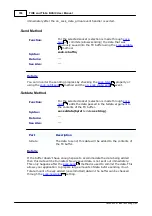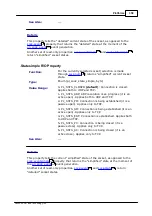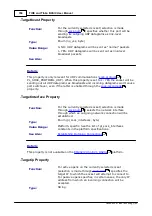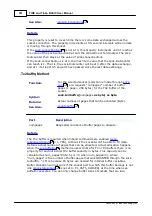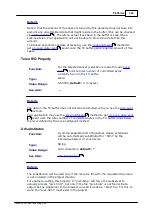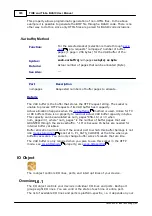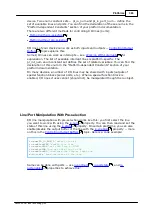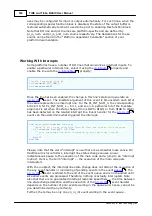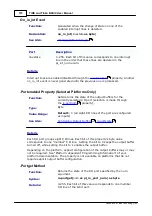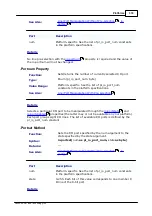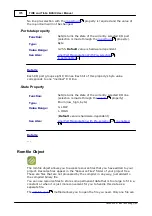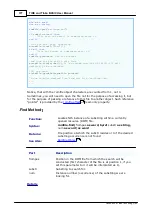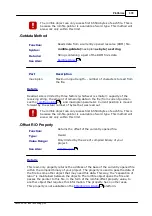
365
TIDE and Tibbo BASIC User Manual
©2000-2008 Tibbo Technology Inc.
This property allows programmatic generation of non-HTML files. In the above
example it is possible to generate the BMP file through a BASIC code. There is no
other way to do this, since only HTML files are parsed for BASIC code inclusions.
.Varbuffrq Method
Function:
For the selected socket (selection is made through
) pre-requests "numpages" number of buffer
pages (1 page= 256 bytes) for the VAR buffer of the
socket.
Syntax:
sock.varbuffrq(numpages as byte) as byte
Returns:
Actual number of pages that can be allocated (Byte).
See Also:
---
Part
Description
numpages
Requested numbers of buffer pages to allocate.
Details
The VAR buffer is the buffer that stores the HTTP request string. The socket is
unable to process HTTP requests if its VAR buffer has 0 capacity.
Actual allocation happens when the
method is used. Unlike for TX
or RX buffers there is no property to read out actual VAR buffer capacity in bytes.
This capacity can be calculated as num_pages*256-16 (or =0 when
num_pages=0), where "num_pages" is the number of buffer pages that was
GRANTED through the sock.varbuffrq. "-16" is because 16 bytes are needed for
internal buffer variables.
Buffer allocation will not work if the socket port to which this buffer belongs is not
idle (
is not at 0- PL_SSTS_CLOSED) at the time when sys.
buffalloc executes. You can only change buffer sizes of sockets that are idle.
The VAR buffer is only required when you plan to use this socket in the HTTP
mode- see
property, also
.
IO Object
The io object controls I/O lines, ports, and interrupt lines of your device.
8.3.6.1
Overview
The I/O object controls your device's individual I/O lines and ports. Each port
groups eight I/O lines. You can control the state of each line or entire port.
The list of available I/O lines and ports is platform-specific, i.e. it depends on your
340
217
358
334
335



